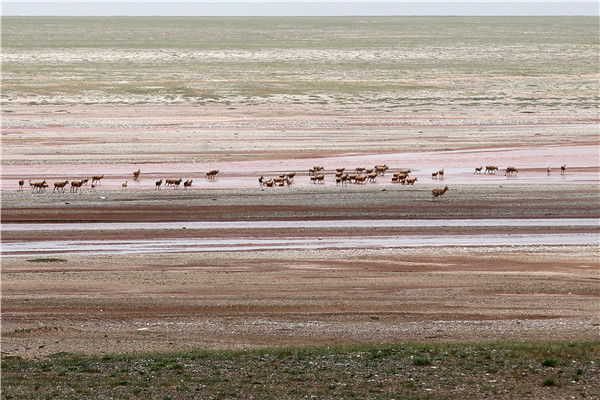Hoh Xil pilots environment protection reform
 |
|
The Tibetan antelope is the best-known endangered species in Hoh Xil. [Photo by Wang Zhuangfei/China Daily] |
The nature reserve, comprising a core zone and buffer areas, covers 45,000 square kilometers and is situated more than 4,500 meters above sea level.
It's China's most biologically diverse nature reserve. As UNESCO notes, the geographical and climatic conditions have nurtured a unique mix of species. More than one-third of the plant varieties, and all the herbivorous mammals are endemic to the plateau.
Seven species are under national first-level protection. The Tibetan antelope is best-known and most representative of the endangered species.
Its numbers had plunged to fewer than 20,000 by the end of the 1990s due to poaching. However, thanks to years of protection efforts, the population has recovered to more than 60,000, the administration's statistics show.
Hoh Xil was listed as a provincial-level reserve in 1996. The next year, it was elevated to the national level, and a special organization was founded to protect it soon afterward.
The Hoh Xil nature reserve is included in a larger protected area that's the source of the three rivers (Sanjiangyuan)-the Yangtze, the Yellow and the Lancang. When the Sanjiangyuan National Nature Reserve was established in 2016 as China's first national park to pilot ecological-protection reform, the Hoh Xil administration became a subordinate organization affiliated with the national park's management bureau.














